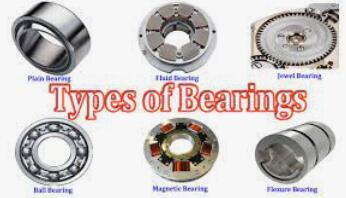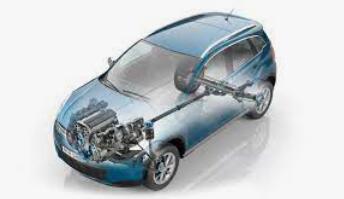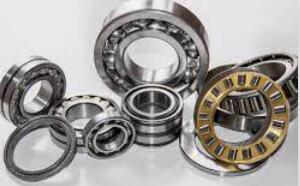How Many Ball Bearings in a Car?
Looking to satisfy your curiosity about the inner workings of cars?
From the engine to the suspension, we'll take you on a journey through the different parts of a car and show you just how many tiny ball bearings it takes to keep everything running smoothly.
So put on your seatbelt and come along for the ride!
Hey there! Are you ready to take a peek under the hood of your car and learn something new?
Well, today we're tackling a question that's been on the minds of car enthusiasts everywhere: how many ball bearings are in a car?
It may seem like a small detail, but those little spheres play a big role in keeping your ride smooth and steady.
So, let's rev up our engines and dive into the fascinating world of ball bearings!
Car parts that have ball bearings:
Wheel hub assembly
Steering system
Transmission
Alternator
Starter motor
Engine
Water pump
Air conditioning compressor
Differential
Supercharger
Turbocharger
These are just a few examples of car parts that use ball bearings.
Ball bearings are small but mighty and can be found in numerous components throughout the car, helping to reduce friction and ensure smooth movement.
Without them, cars wouldn't be able to run as efficiently or smoothly, making them an essential part of automotive engineering.
In this article, we've explored the various parts of a car that rely on ball bearings to keep things running smoothly.
We've discussed the role of ball bearings in the wheel hub assembly, transmission, steering system, and more.
By the end of this article, you'll have a newfound appreciation for these tiny spheres and their significant impact on the performance and reliability of your vehicle.
Types of Ball Bearings Used in Cars

Wheel Bearings
Wheel bearings are a set of small steel balls or rollers that allow the wheels to spin freely on the axle hub assembly.
They are situated in the center of the wheel hub, sandwiched between the spindle and hub shell.
Wheel bearings play a critical role in the proper functioning of a car's wheels and suspension system.
Here are some of the functions that wheel bearings perform in a car:
1.Load bearing:Wheel bearings support the weight of the vehicle and any additional weight it may be carrying.
2.Friction reduction:The rolling action of the bearings reduces friction between the wheel hub and the spindle, allowing for smooth rotation of the wheel.
3.Noise reduction:Wheel bearings help to reduce noise and vibration produced by the movement of the wheels.
4.Alignment retention:Wheel bearings help to keep the wheels aligned properly on the road surface, ensuring that the car drives straight and true.
As for the number of wheel bearings in a car, it varies depending on the make and model.
Most cars have two-wheel bearings per wheel - an inner and outer bearing - bringing the total count to eight for a typical four-wheel vehicle.
However, some larger vehicles like trucks or SUVs may have more wheel bearings due to their size and weight.
Gearbox Bearings
Gearbox bearings are a type of ball bearing that is used to support the gears and shafts within a car's transmission system.
They are typically made from high-grade steel or ceramic materials and can be found in various locations throughout the gearbox.
The functions of gearbox bearings in a car include:
1.Load bearing:Gearbox bearings carry the weight of the gears and shafts within the transmission, supporting them as they rotate at high speeds.
2.Friction reduction:Just like wheel bearings, gearbox bearings help to reduce friction between moving parts, allowing for the smooth operation of the transmission.
3.Noise reduction:By reducing friction and vibrations, gearbox bearings help to reduce the noise produced by the transmission.
4.Alignment retention:Gearbox bearings keep the gears and shafts properly aligned,
ensuring that the transmission operates smoothly and efficiently.
As for the number of gearbox bearings in a car, it can vary depending on the type of transmission.
Manual transmissions typically have several bearings scattered throughout the gearbox,
while automatic transmissions may have fewer but larger bearings that support the main components of the transmission.
In general, a manual transmission could have anywhere from 6 to 12 gearbox bearings,
while an automatic transmission may have 4 to 6 large bearings that support the essential components.
Engine Bearings
Engine bearings are a type of bearing that support the crankshaft and connecting rods in a car's engine.
They allow these components to rotate smoothly, reducing friction and wear on the engine.
Here are some of the functions of engine bearings in a car:
1.Load bearing:Engine bearings withstand the forces generated by the crankshaft and connecting rods as they rotate, thus supporting their weight.
2.Friction reduction:The bearings help reduce friction between the moving parts of the engine,
which helps to keep it running smoothly and efficiently.
3.Heat dissipation:Engine bearings help dissipate heat generated by the friction between the rotating components.
4.Lubrication:Engine bearings are designed to be lubricated by oil, which keeps them cool and reduces friction further.
As for the number of engine bearings in a car, it varies depending on the number of cylinders and the design of the engine.
For example, a four-cylinder engine typically has five main bearings, while a V8 engine may have eight or more.
In addition, there are also rod bearings that support the connecting rods and piston pins, and camshaft bearings that support the camshaft.
All of these bearings work together to keep the engine running smoothly and reliably.
Total Number of Ball Bearings in a Car

Calculation of ball bearings in an average car
Calculating the exact number of ball bearings in an average car can be difficult,
as it depends on various factors such as the make and model, size, and weight of the vehicle.
However, we can make some general estimates based on common components that use ball bearings.
For example, a typical car has four wheels, each of which contains two ball bearings - an inner and outer bearing.
This brings the total count to eight ball bearings for the wheel hub assembly alone.
In addition, there are likely several ball bearings in the transmission system, including those that support the gears and shafts.
A manual transmission could have anywhere from 6 to 12 gearbox bearings,
while an automatic transmission may have 4 to 6 large bearings that support the essential components.
The engine also contains numerous ball bearings, with a four-cylinder engine typically having five main bearings, while a V8 engine may have eight or more.
There are also rod bearings that support the connecting rods and piston pins, and camshaft bearings that support the camshaft.
When you add up all these components, it's clear that an average car contains dozens of ball bearings.
While the exact count may vary, it's safe to say that these tiny but essential components play a vital role in keeping cars running smoothly and efficiently.
Variance in the number of ball bearings based on the car model and make
The number of ball bearings used in a car can vary significantly based on the specific make and model.
This is because different cars require different types of bearings to support their unique designs and operating characteristics.
For example, larger vehicles like trucks and SUVs usually require more ball bearings than smaller cars due to their weight and size.
These vehicles may have additional bearings in the differential, wheel hubs, transmission, and other components to ensure smooth operation.
Similarly, performance cars often have more ball bearings than standard passenger vehicles.
This is because they tend to be driven at higher speeds and put more stress on the engine, drivetrain, and other systems.
As such, these vehicles may incorporate additional ball bearings in the transmission, engine, and suspension to handle the increased load.
Even within the same make and model, the number of ball bearings can vary depending on the specific year and trim level.
For instance, some models may have larger or stronger bearings to accommodate more powerful engines or high-performance driving.
The number of ball bearings used in a car can vary significantly based on the specific vehicle being considered.
It's important for automotive engineers and technicians to carefully select the appropriate bearings for each application to ensure optimal performance and reliability.
Conclusion

In conclusion, ball bearings play an essential role in the smooth and reliable operation of cars.
They are used in a variety of components, including the wheel hub assembly, transmission, engine, and more, to reduce friction, support loads, and ensure proper alignment.
While the exact number of ball bearings in an average car can vary depending on factors such as the make and model,
it's clear that these tiny yet powerful components play a critical role in keeping vehicles running smoothly.





